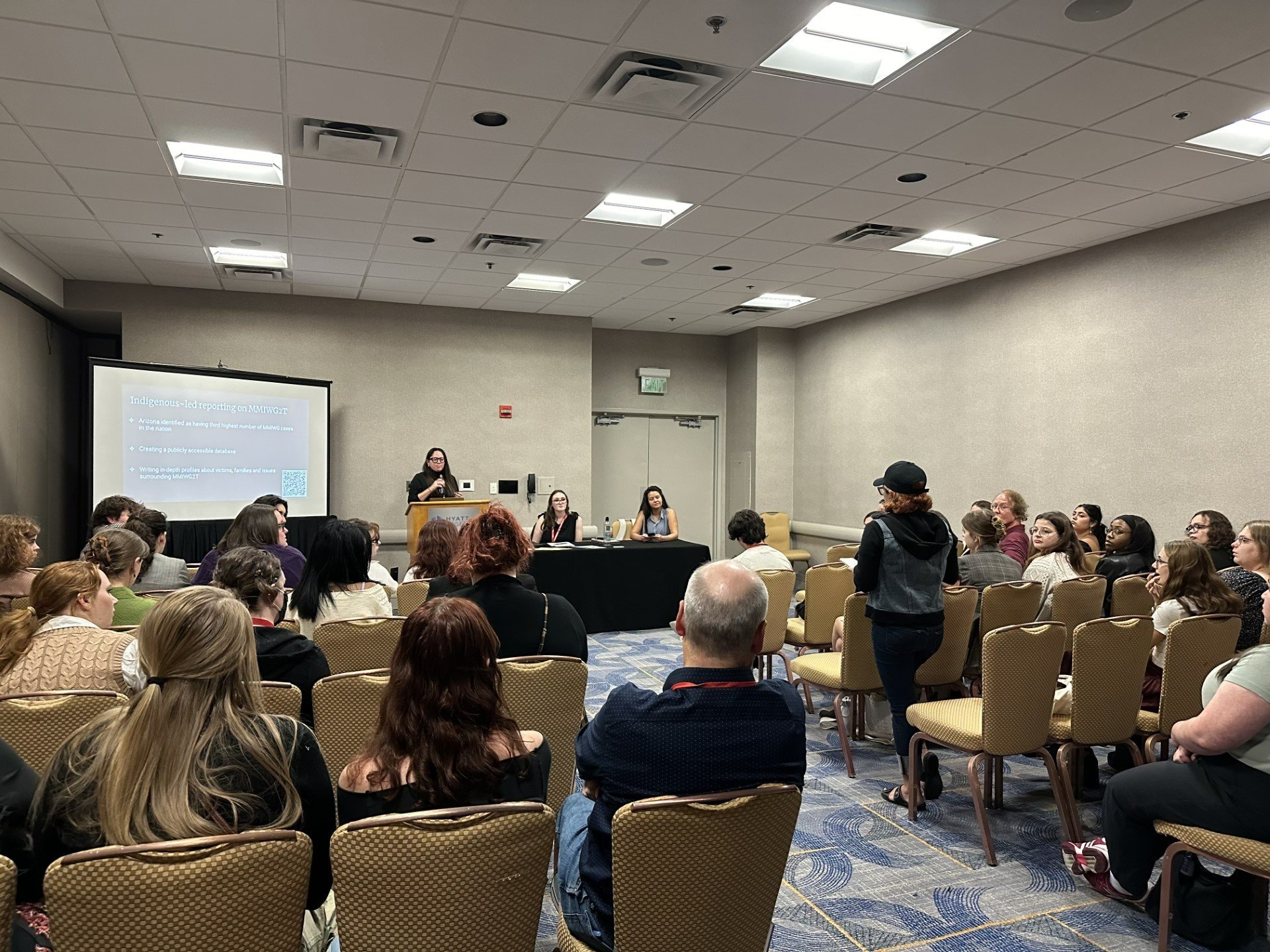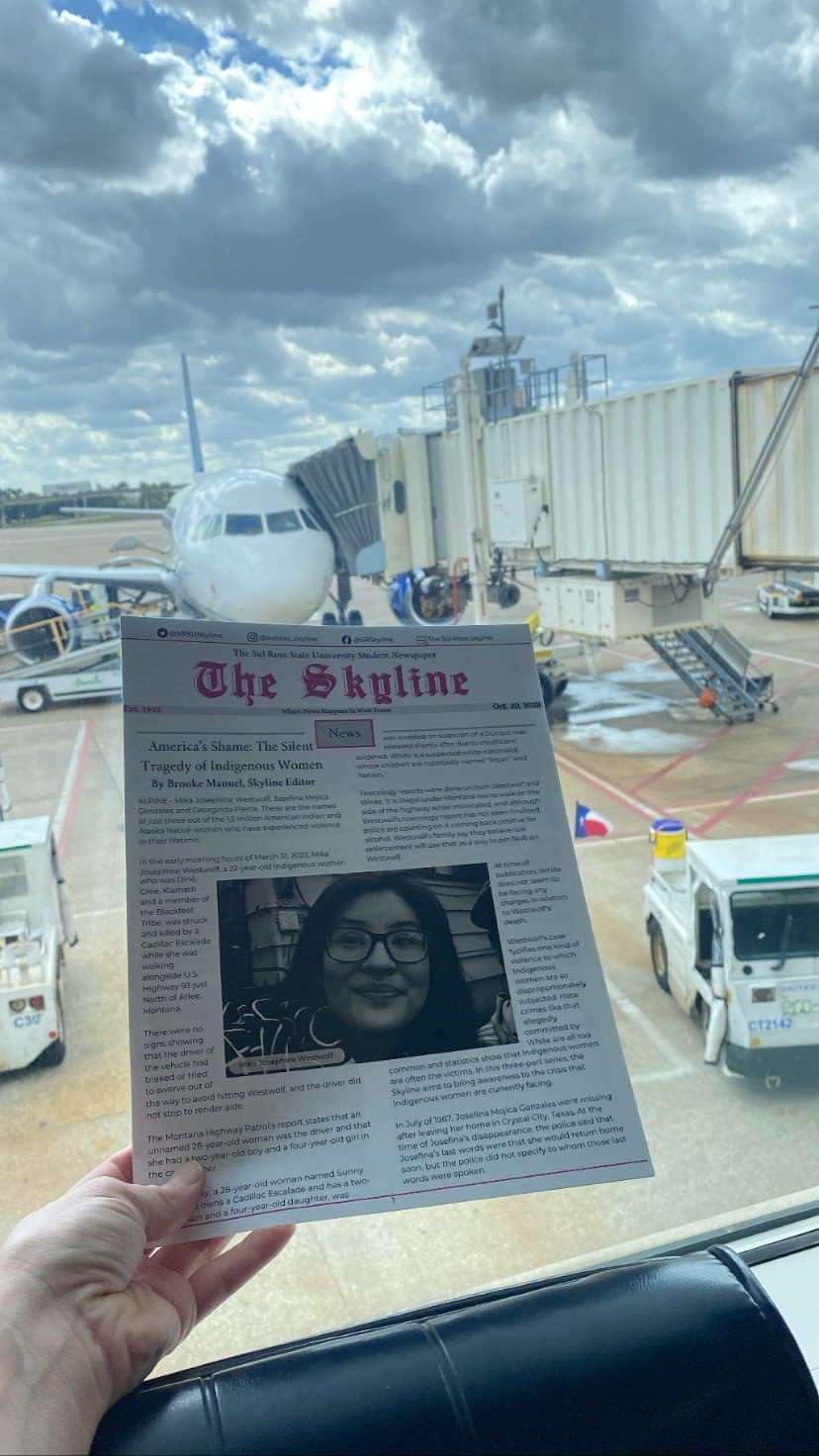Editor’s Note



By Brooke Manuel, Skyline Editor
After months of investigation and research, multiple interviews and weeks of preparation, I looked out across a room full of people staring back at me, waiting to hear what I had to say. All of the chairs in the room were filled by my peers and advisors from across the nation. Alongside names such as Alexis Scott, whose grandfather founded the nation’s first black-owned daily newspaper, the Atlanta Daily World, and Charles M. Blow, reporter, commentator and op-ed columnist for The New York Times, was Brooke Manuel, a 26-year-old student journalist from a town of less than 20,000 people chasing her dream.
Despite the Skyline’s budget being cut nearly in half this semester, I was able to present at one of the nation’s most prestigious student media conferences with the help of Sul Ross State University’s McNair Scholars Research Program, which has funded my reporting on the Missing and Murdered Indigenous Women crisis.
Operating with a staff of only four has proven to be a challenge for us, but we haven’t slowed down a bit. Finding solutions to problems, like not having a photographer or cartoonist on staff, has meant thinking outside of the box.
It’s disheartening that at a time when student journalism is more important than ever, budgets are being cut across the nation, forcing student newspapers to restructure and make critical decisions about what those budget cuts mean to the future of their publications. Of course, budget cuts aren’t unique to college newspapers, with even such venerable institutions as the New York Times and Wall Street Journal coming under the knife.
In an age swarming with misinformation, it makes no sense to hobble student newspapers as they are breeding grounds for full-fledged journalists -- the people who seek the truth, hold others accountable and are voices for those without one.
I had the pleasure of presenting on a panel about the Missing and Murdered Indigenous Women epidemic with Sheena Roetman, who is Lakota and the education manager of the Indigenous Journalists Association, and Chelsea Curtis, who is a Diné (Navajo) reporter for the Arizona Luminaria.
Our panel touched on what exactly MMIW is, my three-part series on MMIW, Curtis’ “Indigenous-led investigative and explanatory reporting project” on MMIWG2T, what it’s like covering topics that hit so close to home, how to access a community that isn’t yours, and how both Native and non-Natives can ethically report on Indigenous issues.
It was an absolute honor to speak alongside Roetman and Curtis about the injustices Indigenous women so often face, and how journalists can help bring these issues to light. Through my reporting, I have been able to help tell the stories of women who have otherwise been swept aside, some for decades.
Attending the 2023 Fall National College Media Convention, hosted by the Associated Collegiate Press and the College Media Association, in Atlanta, Georgia, was an enlightening and eye-opening experience. I met student journalists from across the country and attended numerous sessions by industry professionals such as Brendan Keef, Chief Investigator for Atlanta News First, Kendall Trammell and Naomi Seifu of CNN, and Monica Pearson of WSB-TV.
Over the last year, I have grown both as a student and a journalist, and I have come to understand just exactly what my mentor and lifetime journalist, Sidney Balman Jr., means when he says that sunlight is the best disinfectant.
I cannot thank my co-workers at the Skyline, my adviser and mentor Sid Balman Jr., and Kathleen Rivers, the McNair Scholars director, enough for the endless support and for always cheering me on from the sidelines.
As I near the end of my undergraduate degree, I look back on the opportunities I have had at Sul Ross and with the Skyline, which has defined much of my career as a writer thus far. Despite the long nights (and sometimes early mornings, I despise mornings) and hours spent hunched over my keyboard, I wouldn’t change a thing.
